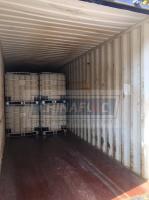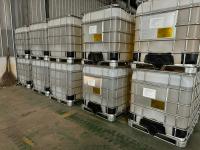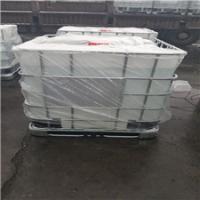Our Products
Product Center / coagulant-LDP 652V can be replaced by Chinafloc--polydadmac

Polydadmac (PolyDADMAC) — full name Poly(diallyldimethylammonium chloride) — is a cationic polymer coagulant widely used in water treatment, wastewater treatment, and various industrial processes. It is one of the most important cationic organic coagulants due to its high charge density, strong electrostatic attraction to negatively charged particles, and good stability in different pH environments.
Below is a comprehensive and detailed explanation (≈850 words) of the applications of Polydadmac, including how and why it is used in different industries.coagulant-LDP 652V
1. Overview of Polydadmac
Polydadmac is a linear, water-soluble cationic polymer synthesized from the monomer diallyldimethylammonium chloride (DADMAC). It typically has:
-
Solid content: 20–50% (in liquid form)
-
Viscosity: varies from 500 to 5000 cps depending on molecular weight
-
Molecular weight: low to medium (100,000 – 500,000 Da for coagulant grades)
-
Charge density: very high, because every repeating unit carries a quaternary ammonium group
Because of its strong positive charge, polydadmac is highly effective for neutralizing negatively charged particles, such as clay, silt, organic matter, and colloids found in water systems. This neutralization promotes coagulation and flocculation, leading to the formation of larger aggregates that can be easily separated.
2. Application in Drinking Water Treatment
One of the primary applications of polydadmac is in potable water treatment. It serves as a primary coagulant or a coagulant aid to replace or enhance traditional inorganic coagulants (like alum or ferric salts).
Functions and benefits include:
-
Charge neutralization: polydadmac binds to negatively charged impurities such as turbidity-causing colloids, organic acids, humic substances, and fine clays.
-
Improved floc formation: promotes larger and more compact flocs compared to alum alone.
-
Reduced sludge volume: organic coagulants produce less sludge than inorganic salts.
-
Wider pH stability: polydadmac performs effectively in pH 4–10, unlike alum which is optimal only near neutral pH.
-
Lower residual aluminum and iron: since it can partially replace metal salts, treated water meets stricter drinking water standards.
Typical dosage ranges from 0.5 to 10 mg/L, depending on water quality.
Example use: surface water clarification before filtration in municipal water plants.coagulant-LDP 652V
3. Application in Wastewater Treatment
Polydadmac is extensively used in industrial and municipal wastewater treatment plants as a primary coagulant or coagulant aid. It helps remove suspended solids, color, and organic pollutants.
Key wastewater applications include:
-
Municipal sewage treatment: improves settling of biological sludge and reduces turbidity in secondary clarifiers.
-
Textile wastewater: effective for removing dyes, color, and chemical oxygen demand (COD).
-
Pulp & paper wastewater: removes lignin derivatives, pitch, and resin acids.
-
Food processing wastewater: coagulates organic solids, fats, and proteins.
-
Tannery and chemical wastewater: neutralizes colloids and reduces total suspended solids (TSS).
Polydadmac also enhances sludge dewatering efficiency when used with anionic polyacrylamide flocculants.
4. Application in Industrial Water Circulation Systems
In cooling towers, boilers, and industrial circulation systems, polydadmac is used as:
-
A dispersant and coagulant for removing turbidity and iron oxide particles from recirculating water.
-
A neutralizer for anionic surfactants in cleaning or pretreatment systems.
-
A slime control aid when combined with biocides, improving overall system hygiene and reducing biofouling.
5. Application in the Pulp and Paper Industry
In papermaking, polydadmac plays several essential roles:coagulant-LDP 652V
-
Retention aid: improves the retention of fillers (such as kaolin, calcium carbonate) and fines during paper formation.
-
Fixing agent: fixes anionic trash and dissolved organic substances in the white water loop, improving paper machine efficiency.
-
Charge neutralization: stabilizes the wet end system by balancing the anionic charge load.
-
Pitch control: reduces pitch and resin deposition on paper machines.
-
Dry strength and drainage aid: enhances drainage through the paper sheet and improves paper strength when combined with other additives.
Its cationic nature allows it to interact strongly with cellulose fibers and negatively charged impurities.
6. Application in the Mining and Mineral Processing Industry
In mineral processing, polydadmac acts as a flocculant aid or coagulant for solid–liquid separation in processes such as:
-
Coal washing: for clarification of thickener overflow water.
-
Bauxite red mud settling: enhances the settling rate of fine red mud particles in alumina refineries.
-
Phosphate and copper flotation tailings: improves clarity and water recovery.
Polydadmac is often combined with anionic polyacrylamides to form a two-step flocculation system — first destabilizing the suspension with polydadmac, then bridging flocs with the anionic polymer.
7. Application in Oil & Gas and Petrochemical Industry
In oilfield water treatment, polydadmac is applied for:coagulant-LDP 652V
-
Demulsification of oil–water mixtures.
-
Produced water clarification and enhanced oil recovery (as a coagulant aid).
-
Sludge treatment and removal of suspended solids in drilling fluids.
It can also improve oil–water separation efficiency in refinery wastewater treatment systems.
8. Application in Dyeing and Textile Industry
Polydadmac effectively removes color, COD, and suspended solids from textile effluents. It destabilizes anionic dye molecules and promotes precipitation.
It is particularly useful for reactive, acid, and direct dyes that resist conventional coagulants. Combined with polyamine or anionic flocculants, it enhances color removal efficiency.
9. Application in Cosmetic, Personal Care, and Antistatic Products
Due to its non-toxic, water-soluble, and film-forming properties, high-purity grades of polydadmac are also used in:
-
Hair conditioners and shampoos (as antistatic agents and conditioning polymers).
-
Skin lotions and gels (for improving texture and moisture retention).
-
Fabric softeners (as cationic conditioning ingredients).
10. Application in Sludge Dewatering
When used before mechanical dewatering (centrifuge, belt press, filter press), polydadmac helps by:coagulant-LDP 652V
-
Compacting sludge structure
-
Reducing bound water content
-
Improving filtrate clarity
It is often dosed ahead of high molecular weight anionic polyacrylamide to maximize cake solids.





